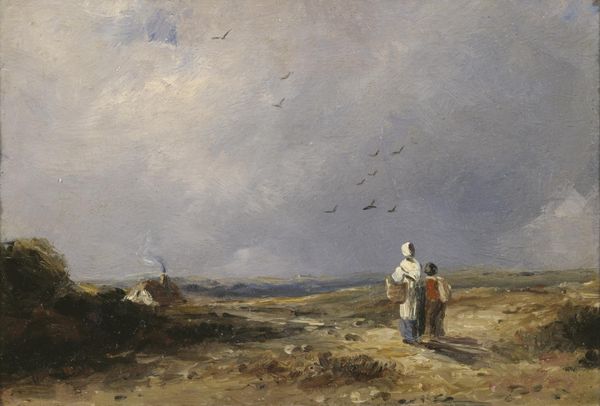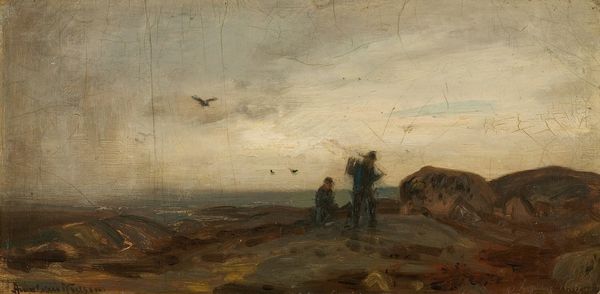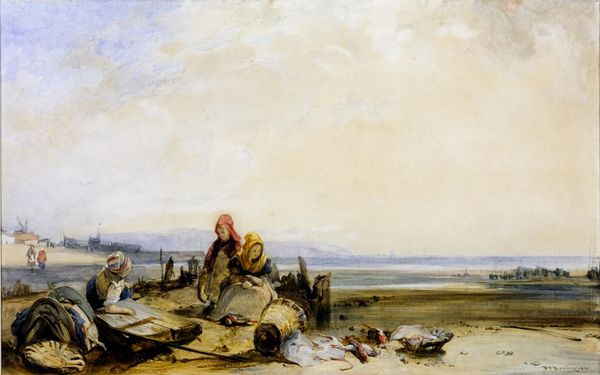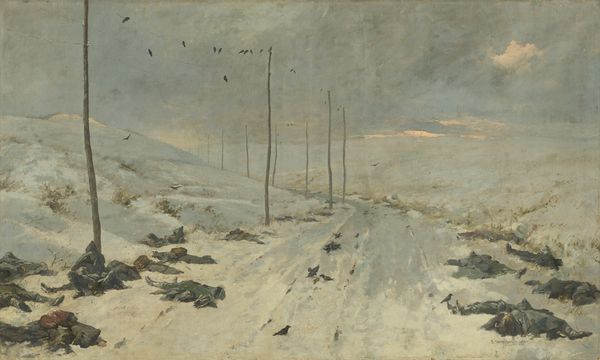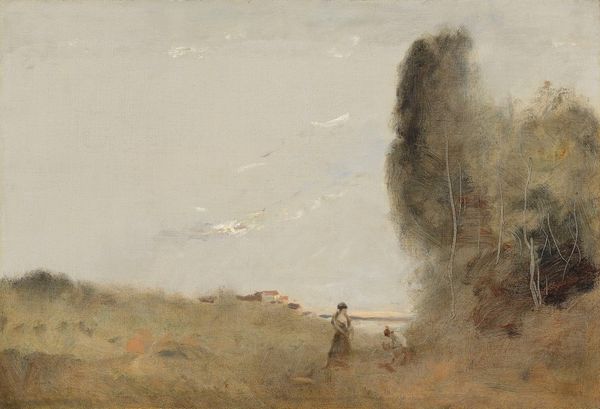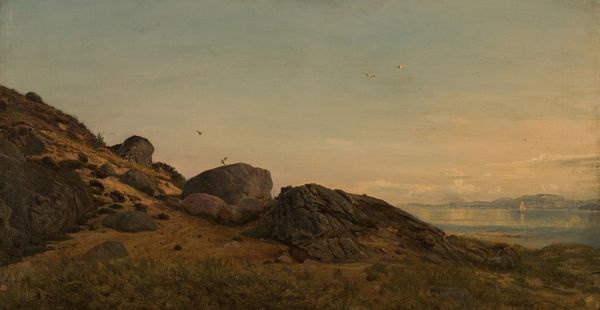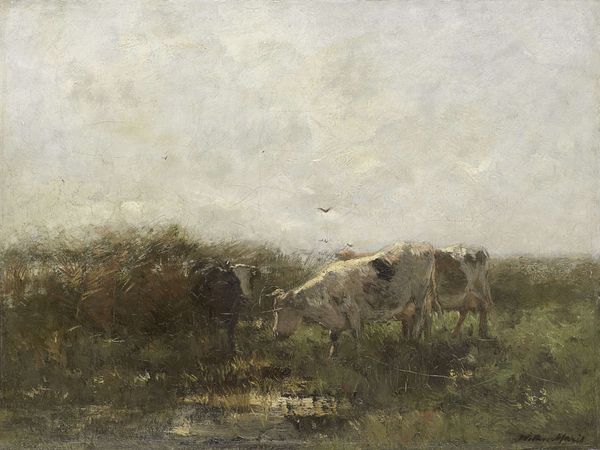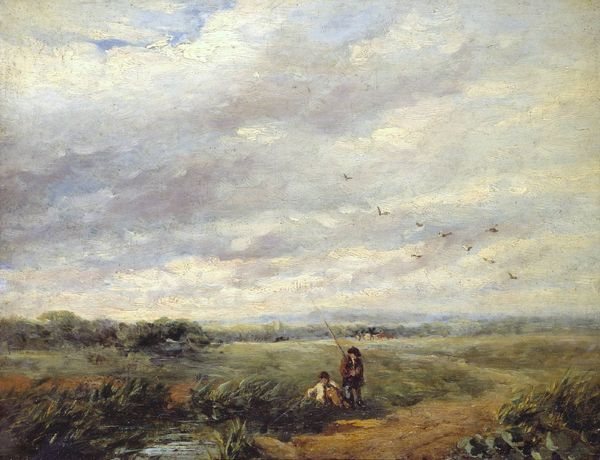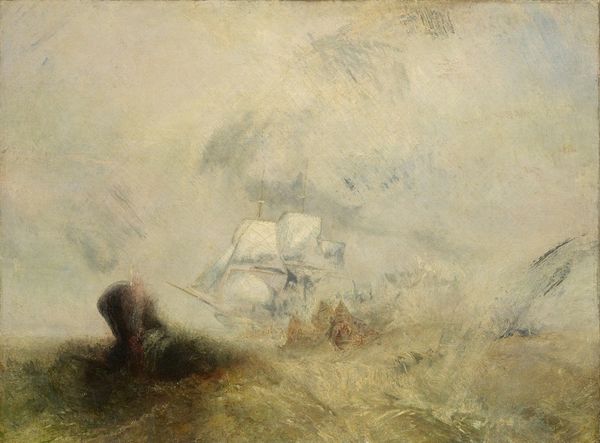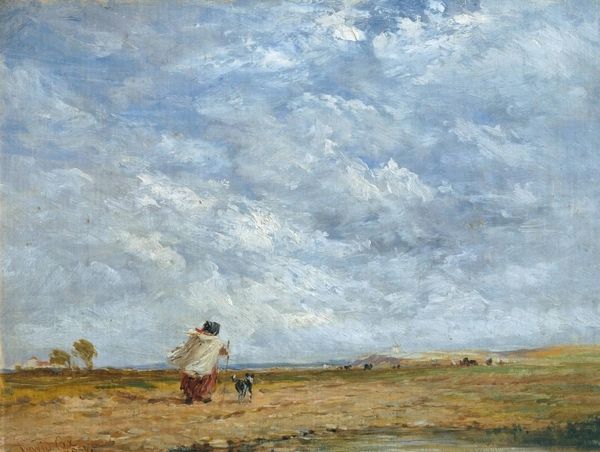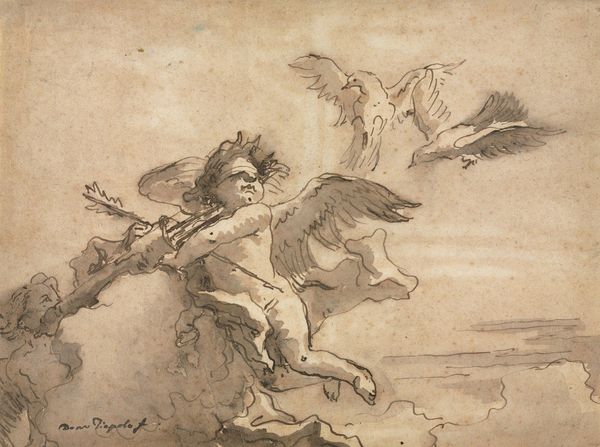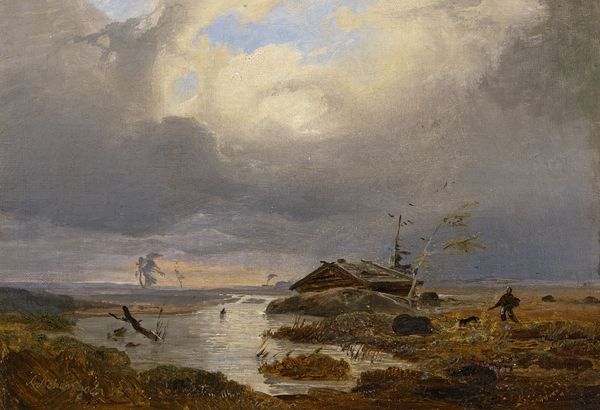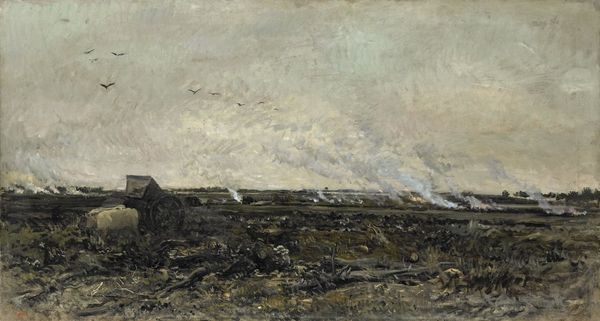
painting, oil-paint
#
narrative-art
#
animal
#
painting
#
oil-paint
#
landscape
#
figuration
#
oil painting
#
romanticism
#
mythology
#
painting painterly
#
genre-painting
Copyright: Public domain
Curator: Editor: Here we have Landseer's "Hawking" from 1832, an oil painting that depicts, well, a hawking scene! The drama of the hawk attacking its prey is pretty captivating. How do you read this piece? Curator: Well, let's consider Landseer’s focus. Not on some aristocratic leisure activity, but on the hawk, its embodied labor as a hunting tool. How do we interpret that focus on labor through materials and context? Editor: I see, so instead of admiring the sport, we are analyzing the labor of the hawk. I hadn’t thought of it that way. Do you mean that Landseer is making a comment about the means of using trained animals to procure goods? Curator: Exactly! The romantic style, usually associated with an idealized natural world, here is depicting work. Note the detailed rendering of the hawk’s plumage with the oil paint, the tangible effort, compared to the quickly rendered, distant human figures and horizon. This imbalance prompts us to consider who benefits and who suffers within systems of labor and resource consumption. The artist is clearly fascinated by animal's anatomy, by muscles that work. Editor: That's such an interesting way to read it, seeing it as less about the human activity of hawking, and more about the materiality and labor inherent in that process through the animal itself. Curator: Precisely. This brings a focus onto how human practices exploit animal power. Editor: This has definitely given me a lot to think about. Thanks! Curator: My pleasure! Considering art through the lens of material and labor, especially focusing on what's 'animal made,' opens up valuable new questions.
Comments
No comments
Be the first to comment and join the conversation on the ultimate creative platform.
